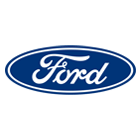
Car Body Types
When searching for a vehicle on our website, there is an option to search by 'bodystyle' or in other words the car body type. Car body type is an automotive term used to categorise vehicles depending on factors such as their size and shape.
Here we've put together a handy guide to car body types in order to help you decide which type of car is ideal for you. If you're unsure about which car you want to lease, then we recommend you read this before searching for a new lease car.
City Car
A city car is a small, efficient car which is perfect for driving around town and cities. City cars typically have a shorter wheelbase, smaller dimensions and engines with lower power output compared to other car types. Due to the compact size, city cars tend to have small boots and passenger space is tight. These cars are also designed to be manoeuvrable and easy to park in tight spaces. In particular, city cars such as the Hyundai i10 and Peugeot 108 prove popular choices for young or new drivers as they have small engines, offer value for money and a lower insurance band than alternative cars.
The best city cars are small, affordable and offer low running costs. That said, we feel the award-winning Kia Picanto is an excellent choice. Now in third generation form, the latest version offers improved styling and a better equipped interior than the previous version. As with all Kia models, the Picanto comes with Kia’s seven year/ 100,000-mile warranty for peace of mind.
View our city car lease deals.

Hatchback
A hatchback car features a rear door which swings upwards for access to the boot space. They typically have second-row seating which can be folded down to allow more boot space. This creates a large boot space for storage. The distinguishing feature of a hatchback is its two-box design, which separates the passenger compartment from the cargo area with a single liftgate. Hatchbacks are a great lease car for families, although they also appeal to a wider audience.
If you’re looking for a family hatchback, the Seat Leon is a great option. This is a sporty looking yet practical family car, offering smart styling, excellent practicality, as well as value for money. We particular like the Seat Leon for its comfortable and enjoyable drive.
View our hatchback lease deals.
Saloon
A saloon car features a closed boot separate from the car body part where the driver and passengers sit. The boot opening of a saloon is usually small, unlike with a hatchback. Also, saloon cars tend to be luxurious and offer a high-quality interior with comfortable seating. The car body is typically longer and wider than a hatchback or a compact car, and it has a sloping roofline that extends towards the rear of the car. Saloon cars come in various sizes and styles, ranging from compact to full-size.
There's a great choice of saloon cars on the market so your decision may be based largely on a desired brand. That said, the premium saloon market remains strong and popular options include the Audi A4 saloon and Jaguar XE. In particular, the Jaguar XE is a compact saloon car with an attractive exterior and luxury interior. As expected, this model has the high quality, luxurious feel of any Jaguar car. Also, this saloon car is enhanced by advanced driving technologies and features. Alternatively, go electric with the Tesla Model 3 Saloon which has quickly become one of the best-selling electric cars in the UK.
View our saloon lease deals.
Estate
An estate car, also known as a wagon or a station wagon, has a long body with a large boot space behind the seats. An estate tends to sit lower than an SUV and this makes the boot level low. They usually have a flat boot floor that makes it easy to load and unload bulky items. Estate cars come in a variety of sizes and styles, and are both versatile and practical, making them ideal lease cars for families or dog owners.
The best estate cars are spacious, versatile and feature a large boot space. That said, we feel the Audi A6 Avant or Volvo V60 are great options. Another excellent estate car is the new Suzuki Swace, introduced to the UK in 2020. Largely based on the Toyota Corolla Touring Sports, this estate car is a self-charging hybrid and features a large 596-litre boot capacity.
View our estate car lease deals.
Coupe
A coupe car typically features a fixed sloping rear roofline and usually have limited rear volume. With a lower roofline than a saloon or a hatchback, the coupe has a more aggressive and dynamic look, which is often associated with speed and performance. However, the passenger compartment of a coupe car may feel more cramped than a saloon. A coupe tends to be a two-door car and appeals to people who want a sportier looking car that's fun to drive. The ideal coupe offers performance and style for a thrilling drive, as well as value for money.
At GB Vehicle Leasing, we have competitive rates on a wide choice of coupes such as BMW M4 Coupe, BMW 2 Series Coupe and Jaguar F-Type Coupe. Alternatively, go electric with the BMW i4 Gran Coupe. Typically, a coupe is smaller in size, two-doors and slightly sportier than a saloon car.
View our coupe car lease deals.
SUV
SUV is an abbreviation for 'sport utility vehicle'. Typically, an SUV is a powerful vehicle with off-road vehicle features and available four-wheel drive which provides better traction and handling on slippery surfaces. An SUV is also characterised by a large body size, ample boot space and a higher driving position. SUVs are grouped into sub-segments which are large, midsize, small and compact. Over the years, manufacturers have developed performance variants of SUV models for added power. The Range Rover Sport SVR, which goes from 0-60mph in 4.3 seconds, is a key example of a performance SUV.
Considering going electric? Some of our favourite electric SUVs include the Kia e-Niro, Audi Q4 e-tron and BMW iX. In particular, in terms of range, it’s claimed the BMW iX xDrive50 can achieve up to 380 miles (WLTP) thanks to a powerful high-voltage battery. Furthermore, the new BMW iX has an elegant design and is powered by advanced BMW eDrive technology.
View our SUV lease deals.
Convertible
A convertible car, also known as a cabriolet, is a type of car that can be transformed from a closed, hard-top vehicle to an open-top vehicle by folding down the roof. Convertibles typically feature a retractable fabric or hard-top roof that can be lowered or raised at the touch of a button. This allows the occupants of the car to have an open-air driving experience, if desired. However, convertibles usually have limited boot capacity and interior space. They are often favoured by consumers who are looking for a sporty car that is both stylish and fun to drive.
Here, we have competitive rates on a wide range of convertibles such as the Mazda MX-5, BMW Z4 and Porsche 718 Boxster. In particular, BMW Z4 has a striking presence on any road and the soft top roof is the perfect finishing touch. Combine this with the agile handling and it’s easy to see why the Z4 appeals to car enthusiasts.
Electric convertible cars are currently in short supply as manufacturers have decided to focus more on introducing pure electric SUVs, hatchbacks and saloons. However, there are a few electric convertible cars, for example the Fiat 500 Electric Convertible. To find out more about electric car leasing, please call our EV specialists on 0161 667 5338.
View our convertible lease deals.
Supermini
A supermini is a small car, sized between a city car and a hatchback. Although a supermini is slightly bigger than a city car, it doesn’t offer as much comfort or interior space as a hatchback car. Superminis are generally powered by small, fuel-efficient engines, which are designed to provide good fuel economy without sacrificing performance. Superminis are also a popular choice for first-time drivers, as they are typically less expensive than larger cars, easy to drive and offer good value for money.
Key examples of superminis include the Vauxhall Corsa and Volkswagen Polo. These cars offer the perfect blend of reliability and affordability. However, they do tend to lack practicality and are not the best cars for driving on motorways. Typically, a supermini has 3-doors, although some 5-door options are available.
People Carrier
A people carrier, also known as a multi-purpose vehicle (MPV), is a type of car that is designed to transport passengers in comfort and style. Although they look like vans, a people carrier is a large car with plenty of seating to transport more passengers. Also, there's ample storage space for your luggage and they come well equipped. These cars could be ideal for large families due to the spacious interior and flexible seating arrangements. They are also popular with commercial operators as they are able to transport large groups of people in comfort and safety.
There's an excellent selection of people carriers to choose from. However, the new Mercedes-Benz EQV particularly stands out to us. It’s reported that one full charge of the Mercedes EQV can provide an excellent range up to 213 miles (WLTP). Also, the EQV can reach 10-80% charge using public rapid charging (100kW charger) in just 45 minutes. Mercedes EQV leasing offers Mercedes’ finest features to help make your journey as pleasant as possible.
View our people carrier lease deals.
Crossover
A crossover offers the perfect blend between popular SUV elements and the practicality of a smaller car. Therefore, a crossover is considered more a mix between a Hatchback and an SUV. Crossovers are designed to be more practical and versatile than traditional cars, while still providing a comfortable driving experience. Also, crossovers are often available with all-wheel drive (but not always), which provides good traction and handling in a variety of driving conditions.
Although a crossover and SUV have similar style features, an SUV tends to be more rugged and is better off road than a crossover. At GB Vehicle Leasing, we offer competitive rates on a wide range of crossovers, such as the Toyota Yaris Cross and Ford Puma.
Microcar
A microcar, also known as a minicar, is a type of very small and compact car designed for short-distance urban transportation. Microcars are characterized by their tiny size, lightweight construction, and minimalistic design. They are typically designed to carry a small number of passengers, often seating two to four people, and are primarily intended for urban or suburban commuting.
Microcars are significantly smaller than traditional cars, with a focus on maximising interior space while minimizing the vehicle's overall footprint. As well, microcars tend to have simplified features and minimalistic interiors. They may lack some of the amenities and luxuries found in larger vehicles. Moreover, microcars are not designed for high-speed motorway travel. Key examples of microcars include the Renault Twizy and Citroen Ami.
FAQs About Car Body Types
What's the difference between an SUV and a 4x4?
An SUV and a 4x4 do share some similarities, such as their off-road capability and versatility, so these terms are often used interchangeably. However, an SUV is made for everyday driving and offers high levels of comfort. Whereas, a 4x4 focuses on four-wheel drive so all four wheels are powered and therefore can handle uneven or slippery surfaces better. Some SUVs do come with four-wheel drive as standard, but not always as they can be a two-wheel drive vehicle instead.
Are SUVs cheap cars to run?
Due to the large size of SUVs, some people presume they offer poor fuel economy. However, this doesn't have to be the case, as more manufacturers have now introduced economical SUVs. For example, you might consider the Ford Kuga 2.5L Plug-in Hybrid as an economical SUV. This hybrid model has a combined WLTP fuel economy of over 200mpg and in 'EV Now' mode it's capable of up to 39 miles electric-only range. A fuel-only figure of around 40mpg is realistic, especially if you do lots of motorway driving.
Are hatchbacks cheap cars to insure?
As with any other type of car, there are various factors which impact the cost of insurance, such as age, usage and driver experience. However, hatchbacks are generally considered to be among the more affordable cars to insure. Hatchbacks tend to have lower purchase prices compared to larger vehicles or luxury cars. Since the cost of the car is a factor that insurers consider when determining premiums, the affordability of hatchbacks can contribute to lower insurance rates. Plus, selecting a car with a smaller engine option can help towards reducing your insurance costs. Some hatchback models are popular choices among younger, less experienced drivers. While age and driving experience can affect insurance rates, the overall affordability of hatchbacks can still make them relatively inexpensive to insure for this demographic.
What is the difference between an estate car and a hatchback?
Estate cars and hatchbacks are both popular body styles in the automotive market, but they have distinct differences. Firstly, hatchbacks are generally smaller in size and have a compact body style. Whereas an estate car features an extended rear end to accommodate the extra boot space. If you require maximum storage space to carry large loads of luggage, then you’ll probably prefer an estate car to a hatchback. Also, estate cars usually have a roomier rear cabin compared to hatchbacks. The additional space can provide greater comfort for rear-seat passengers on longer journeys.
Furthermore, hatchbacks tend to have a sportier and more compact appearance, often appealing to customers looking for a stylish and urban-friendly vehicle. Hatchbacks are well-suited for urban commuting, small families, and individuals who prioritise maneuverability and fuel efficiency. They are also popular among younger drivers. Whereas, estate cars have a more traditional and family-oriented appearance. They are designed with practicality in mind, focusing on functionality and cargo capacity. Estate cars are favoured by families, outdoor enthusiasts, and those who need a vehicle for extended road trips.
What is the cheapest car body type?
The cheapest car body type typically depends on various factors, including the brand, model, market, and the specific features and trim levels offered by a manufacturer. However, in many cases, the supermini body type tends to be among the most affordable options.
Superminis are known for their compact size, efficient use of space, and often simpler designs compared to larger and more specialised body types like SUVs or sports cars. Despite their compact dimensions, they offer surprisingly spacious and adaptable interiors, with clever design maximising passenger and cargo space.
Superminis are typically fuel-efficient, making them budget-friendly for daily commuting. Many come equipped with modern features, including advanced safety technologies, infotainment systems, and connectivity options. This blend of economy and convenience appeals to a wide range of customers. Their affordability, both in terms of purchase price and running costs, has contributed to their popularity. Superminis are often seen as an ideal choice for new drivers and those who want an economical second vehicle.
Are you in search of cheap car leasing deals in the UK? Click here to view our latest cheap car lease deals.
What is the difference between a coupe car and a convertible?
Coupes and convertibles are two distinct car body styles that share similarities but also have key differences. Firstly, coupes have a fixed roof that doesn't retract or open. The roof is typically composed of a solid material, such as metal or composite, and is permanently attached to the car's body. Also, coupes usually have seating for two to four passengers, with two full-size doors for easy access to the front and rear seats. They tend to have a sloping roofline, which gives them a distinct and stylish appearance.
Whereas, convertibles have a retractable roof that can be lowered or raised to expose or enclose the cabin. The roof is often made of fabric or a similar flexible material. Convertibles usually provide seating for two to four passengers, similar to coupes. However, some convertibles may have less rear-seat space or reduced headroom due to the folding roof mechanism. While convertibles provide an open-air driving experience, they may be noisier and less insulated than coupes, especially when the roof is down. Many drivers choose convertibles for their aesthetic appeal and the pleasure of open-air driving. They are often associated with a sense of adventure and fun.
What's the difference between an SUV and a crossover?
SUVs and crossovers share similarities but differ in their underlying structures. SUVs are generally larger, with greater towing capacities, making them suitable for heavy-duty tasks. Crossovers, being more car-like, are often lighter and more fuel-efficient. While both offer versatile space and elevated driving positions, the distinction lies in their design philosophy—SUVs for robust utility and off-road prowess, and crossovers for a smoother, city-centric driving experience.
About The Author: Charlotte Kennedy
Charlotte joined the GB Vehicle Leasing team around 6 years ago starting out as an apprentice and is now being a key member of our marketing team.
Find Out More About CharlotteUseful Links
Newsletter Sign Up
Receive the latest content right in your inbox weekly
Latest Posts

Volkswagen Taigo vs T-Roc: How Do They Compare
Here, we explore how they compare...

Skoda Elroq Review 2025
Buckle up, folks! This new Skoda...

Pre-Registered Vehicles Explained
Learn what a pre-registered vehicle is...

Hyundai Inster Review 2025
Move over, conventional cars! The Hyundai...

Vehicle Delivery Lead Times Explained
From custom factory orders to in...



















































